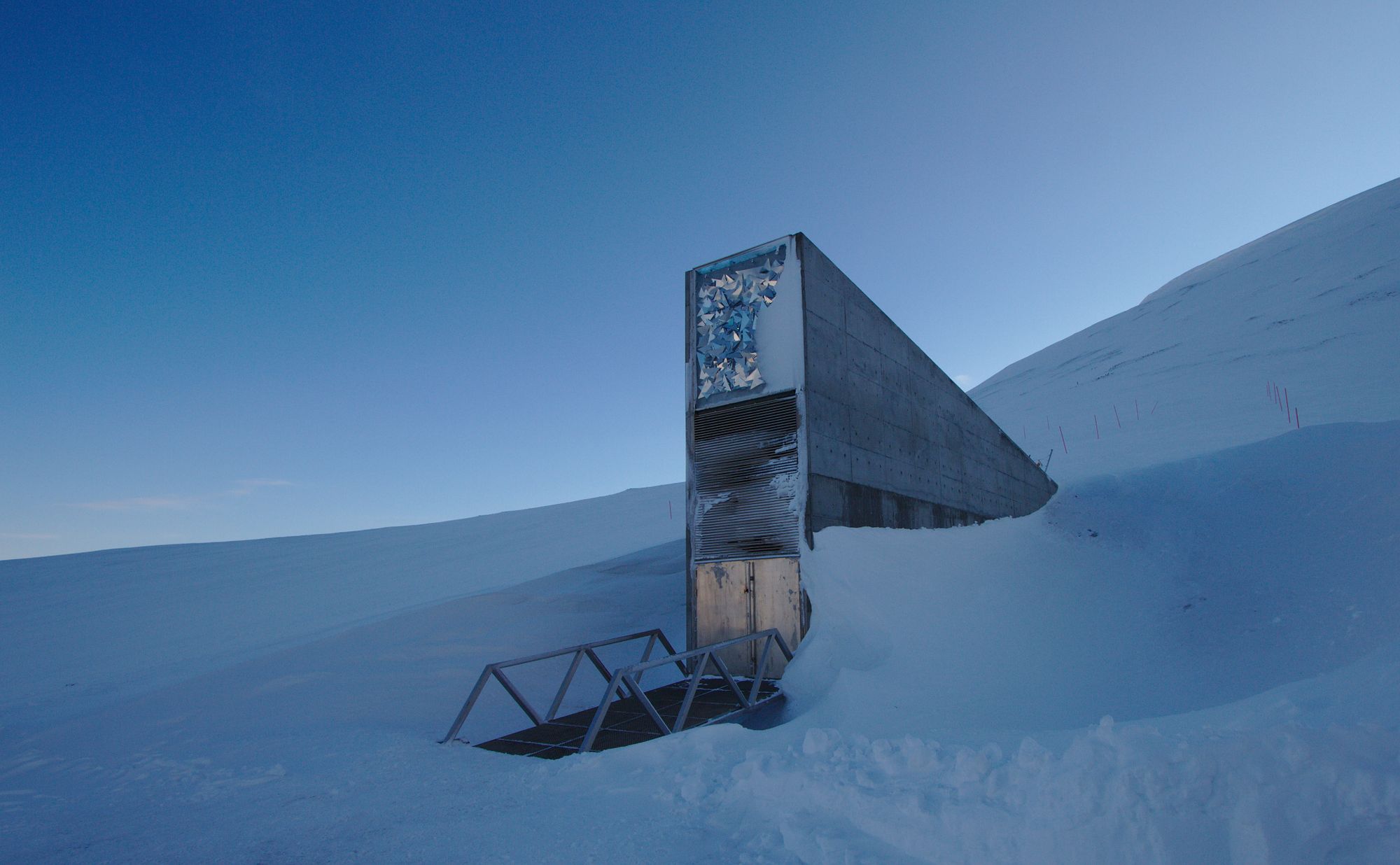
The Library of Utility
There is no need to wait for the Library to be built at the top of the mountain. It could be started now, in any garage. What books would you bring to it if you could?
I imagine a library atop a remote mountain that collects the essential information needed to re-learn practical knowledge essential to civilization. This depot, open to anyone who journeys there, is the cultural equivalent of the Svalbard seed bank, a vault on the Arctic Circle that holds frozen seeds of crop plants from around the world. The utilitarian documents in this vault would be the seeds of culture, able to sprout again if needed. It would be the Library of Utility, and it would serve as civilization’s backup.

Most great libraries of today have a broad mandate to be very inclusive. They contain “everything.” This everything is being duplicated in digital form by Google and others as the long-desired Universal Library. But the library at the top of the mountain would be different. It would be a very selective library. It would not contain the world’s great literature, or varied accounts of history, or deep knowledge of ethnic wonders, or speculations about the future. It has no records of past news, no children’s books, no tomes on philosophy. It contains only seeds. Seeds of utilitarian know-how. How to recreate the infrastructure and technology of civilization so far. The library would gather the knowledge needed to recreate itself — all the mechanical structures of brick, mortar, glass — the library itself. One could think of it as a manual for making a physical library with books and paper. Or a manual for reconstruction the infrastructure of civilization. A civilization reboot manual, which has also been discussed at the Long Now Foundation and in various science fiction stories. From the seeds of know-how archived here you could regrow the arts of printing, or metalworking, or plastics, or plywood, or laser discs.
This information is not usually found in libraries, or in books, or even on the web in text. These days much instructional and utilitarian information is conveyed in YouTube clips. Partly because video is a good way to show how something is done, but also because it is much easier to record a video that put things into words and diagrams. But often that ease lowers the quality of instruction. If you had to rely on a university library to find instructions on how to make sheet metal from ore, or even to find and extract the ore, or to make plastic from oil, or to grow silicon to make make a chip, it would be very difficult. Usually such utilitarian knowledge is missing from books, but even when it is present in the library, it is dilute and spread throughout many books or journals. A lot of this utilitarian knowledge is implicit knowledge and passed along outside of written documentation. And when written down, these documents are often not the type to find their way into libraries.

It need not be a giant library. It may be possible to fit all the essential information needed to bootstrap the infrastructure of civilization into 10,000 books or so. And unlike the Universal Library of Google, it would be on paper. In a century or so, paper-based books will be rare. But paper books will outlast any digital platform and paper requires the least amount of technology to access. Paper will be universally readable at any period. You can’t say that about floppy disks, CD-Roms, and PDFs.
But rather than containing merely shelves of books, this Library of Utility would contain sequences of books. Depending on where you wanted to start, you would visit different documents. If you already knew how to make glue, you could immediately start the instructions on making plywood. But if you did not know how to make water-proof glue, you would begin at a different point. Or if you knew glue and wood spinning, but did not know about hydraulic presses, you’d get a different set of instructions. That multi-forking seems pretty hypertext; would not digital be better for this? Yes, it would be better, but would be done in paper as a back up.
Perhaps the Library of Utility is usually sealed airtight, say through the winter, and it is opened a few times, or a few months, a year for adding books and research. This is a 10,000-year Library, encased in an impermeable shell that could last for hundreds of years without human attention if it came to that. So the Library of Utility would be built to house the most essential 10,000 books for 10,000 years, a library of practical knowledge that could be bootstrapped to restart civilization at any point it might be needed.
There is no need to wait for the Library to be built at the top of the mountain. It could be started now, in any garage. What books would you bring to it if you could?
(The image on top image is of the Svalbard seed bank. No books, only seeds.The second is of small monastery in the Himalayas, near Paro, Bhutan. There were only a few books in it. )
This article was cross posted from The Technium.
Join our newsletter for the latest in long-term thinking
Subscribe